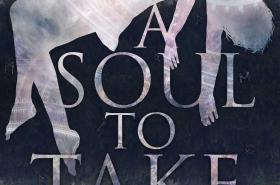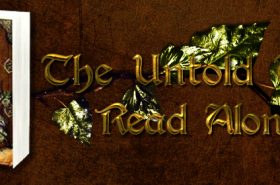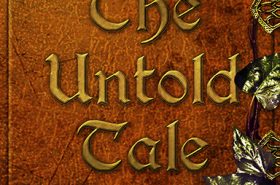Welcome to the daunting final installment of my subgenre series — the long-awaited behemoth, Science Fiction.
Sci-fi is most often synonymous with spaceships, aliens, technology, robots, and to some, Star Trek or Star Wars. But there’s more to it than that. Just like Fantasy sports a whopping 31 subgenres, Science Fiction contains a plethora of subtle variations, each deserving of its own subcategory. A shocking 37 subcategories, to be exact. (And I thought Fantasy was bad!) Now you know why I had to keep deferring this one. That’s a lot of research! Ready to find out what these 37 subcategories are? Then let’s get to it.
Hard Science Fiction
This is the subgenre most people think of when they hear “Science Fiction.” Drawing from the “hard” sciences — physics, astronomy, chemistry– Hard Science Fiction is not for those easily lost by conceptual details. Scientific realism trumps the more mundane aspects of character or plot development, placing this subgenre’s focus on things like exploration and discovery instead. Expect a lot of attention to be paid to process explanations and technology, and if this is a genre you want to write, expect to put in hefty amounts of research. Plausibility is king in this field. If it’s not believable, that ship’s not gonna fly. (Pun intended.)
Star Trek is the most notable example of Hard Sci-fi. There is character development across the series, but that’s not the main focus. I mean, they say it right in the opening sequence. The mission is to “boldly go where no man has gone before.” That same slogan applies to pretty much everything in this category.
Soft Science Fiction
The exact opposite of Hard Sci-fi, Soft Sci-fi puts the emphasis on character and plot, with the scientific aspects taking a backseat. This subgenre focuses on what are considered the “soft” sciences– anthropology, political science, sociology, psychology, etc. Anne McCaffrey’s Dragon Riders of Pern series would fall in this category. Deceptively starting off as a Fantasy with just a light hint of Sci-fi, later books in the series reveal a heavier Sci-fi slant. But the focus is largely on the characters and cultures, with very clear influence from the disciplines of anthropology and political science.
Military Science Fiction
The name says it all on this one. Military Science Fiction revolves around a distinctly militaristic theme. Usually, the characters are part of the military and the plot involves some kind of war. For those fans of the video game world, Bioware’s Mass Effect trilogy and Bungie’s Halo series are prime examples of this type of story.
Robot Fiction
Another one where the name is pretty self-explanatory. Works in this category place heavy focus on the science of robotics. Isaac Asimov is one of the most prominent pioneers of this subgenre, but you’ll see this theme a lot in films. 2004’s I, Robot springs to mind as a popular example of these kinds of stories.
Social Science Fiction
Social Science Fiction is an interesting creature. It relies heavily on the influence of Social Science to extrapolate and then criticize future societies. So at its heart, it’s a genre bent on satire, on delivering criticisms and moral messages about our own society through the filter of a fictional, future one. This subgenre shares a lot of similarities with Dystopian Fiction in that sense. Notable, and probably familiar, examples include Brave New World by Aldous Huxley and The Giver by Lois Lowry.
Space Opera
For those of you who pictured the operatic blue alien from The Fifth Element, I’m sorry to say, you’re wrong. This subgenre has nothing to do with music. It does, however, bear a slight resemblance to its more earthly counterpart — the Soap Opera.
Space Operas are adventure stories. Romanticized and melodramatic sometimes, but still. They usually center around a sympathetic hero going up against insane odds in an epic battle to save the universe. Good always wins in a Space Opera, and if you can’t guess the notable work I’m alluding to yet, here’s a hint: it features light-sabers, Wookies, and a princess in a slave outfit. 😉
That’s right, Star Wars was, and is, considered a Space Opera. (Alternatively, it’s also known as a Science Fantasy, for the same thematic reasons.)
So although this subgenre may have some intrinsic ties to the much-ridiculed Soap Opera, don’t let that color your feelings. Star Wars is one of the most successful Science Fiction franchises of all time, and if it can survive being called a Space Opera, your work probably can too.
Steampunk
Steampunk is an strange one, spawning an entire subculture as well as a subgenre. It’s often set in an industrialized not-so-distant, alternate future, with heavy influences from 19th century Victorian England and the American Wild West. Strange combo, no? It may also contain elements of Fantasy, Horror, or Historical Fiction. The main requirement, though, is that a story in this category must include steam-technology and a 19th century perspective on everything from machinery to fashion. Examples include the work of H. G. Wells and Jules Verne as well as more contemporary author, Phillip Pullman. But with the rapidly growing popularity of this cultural movement, Steampunk will likely have several more notable titles soon.
Cyberpunk
Cyberpunk is Sci-Fi’s answer to the Detective/Crime Novel. Its settings are typically dark and gritty, with a heavy emphasis placed on advanced technology. Plots often revolve around the degradation of society and the abuse of technology. Hackers, Artificial Intelligence and Megacorporations spying on the world are all elements seen in these high-intensity thrill rides. The work of Phillip K. Dick falls largely under this category, making him one of the most well-known authors in this field.
Biopunk
Biopunk is pretty much the same as Cyberpunk, but instead of an emphasis on technology, it focuses on the biological. Genetic modification and DNA engineering are common in this subgenre, providing a cautionary look at the downside to messing with biology. The Island of Dr Moreau by H. G. Wells would be a prime example, although it technically predates the creation of this category.
Nanopunk
Another cousin of the previous “punk” categories, Nanopunk focuses on a specific set of technology — nanotechnology. Michael Chricton’s Prey, as well as NBC’s recent hit show, Revolution, are both examples.
Superhero Fiction
Ah yes, a subgenre full of dudes in tights and capes, and women wearing barely-there spandex and magic-powered accessories. I don’t think there’s a person alive who isn’t familiar with this category, (don’t lie, you know you went through the towel-turned-cape wearing phase when you were a kid) although it’s much more popular in the visual mediums– TV, film, video games, and comic books.
The basic idea is exactly what you’d expect, a “good” protagonist dressed in an elaborate costume faces off against a supervillain. Often, both hero and villain have superhuman abilities, making their battles nothing less than epic. Which is why we continue to reboot these narratives over and over and over again. I mean, seriously, what are we on, like our 8th Batman?
Scientific Romance
No, this isn’t a combination of Sci-Fi and Romance, although that does exist. (It’s considered Science Fiction Romance, in case you forgot. 😉 ) Scientific Romance is actually an archaic term that was the genre’s original name. Now, it refers specifically to works from the late 19th to early 20th centuries or ones that are purposely written to sound that way. H.G Wells, Jules Vern, and Sir Arthur Conan Doyle are considered part of this category, largely because they were writing during that time frame, pioneering the genre.
Gothic Science Fiction
I find it interesting that this isn’t lumped into Horror Sci-Fi, but rather is given its own designation. Gothic Science Fiction is what it claims– a combination of Gothic-minded elements and Sci-fi. Vampires and Zombies are frequent visitors here. The most common plot is the attempt to explain monsters through science. There’s heavy emphasis placed on the biological explanation of these more-typically mythological creatures while still maintaining that darker, Gothic edge. Think Mary Shelley’s Frankenstein, or Richard Matheson’s I Am Legend.
Mundane Science Fiction
This subgenre very closely resembles Hard Sci-fi, except there’s no interstellar travel or alien life forms. Fascinatingly enough, part of this subgenre is a position that things like worm holes, warp drives, and multi-galaxy exploration (all things typically found in Hard Sci-fi) are speculative wish-fulfillment and could never really happen. (Which I suppose makes the choice of “mundane” in the title fairly appropriate.) Instead, this subgenre focuses on stories that could happen, and often contain scientific data that can be, or has been, corroborated by scientists. Geoff Ryman and the short story anthology he edited, When It Changed: Science Into Fiction, are the most prominent names associated with this subgenre.
Horror Science-fiction
Just like it sounds, this is a combination of Horror and Sci-fi. Pairing the adrenaline inducing gore and violence of Horror with Sci-fi’s action-based futures, this is a powerful combination. Alien invasions, mad scientists, experiments gone wrong, there’s really no end to the number of ways Sci-fi can terrify us. Resident Evil, The Body-snatchers, The Alien Franchise, even The Terminator, are all examples of just how lucrative this category can be.
Comic Sci-fi
Again, pretty straight-forward. In fact, so straight-forward that all I should have to say is this: Douglas Adam’s Hitchhiker’s Guide to the Galaxy. See? Enough said, right?
But seriously, this is a combination of Comedy and Sci-fi. It exploits the elements of Science Fiction for comic relief, often leaning toward satire, as in our example above.
Science Fantasy
This is a blend of Science Fiction and Fantasy (Duh, right?) that lends a sheen of scientific realism to things that could never really exist. This is a squishy subgenre at best, and has never been truly solidified with a description. Surprisingly, one of my all-time favorite series, Shannara, by Terry Brooks, is considered this. I never knew that. See? Even I learn something doing these posts.
Apocalyptic Science Fiction
These next two subcategories are very tightly linked. Apocalyptic Science Fiction is all about the end of days, the downfall of civilization. The whole story leads up to some cataclysmic event that destroys life as we know it. Sometimes we survive, sometimes we don’t. But once disaster strikes, the story’s over. Otherwise, it becomes part of the next subgenre.
Post-Apocalyptic Science Fiction
If Apocalyptic is about the disaster itself, Post-apocalyptic naturally features what happens next, after the crisis. Often it includes desolate landscapes, a much smaller population, and sometimes even a return to medieval, or non-technology-enhanced ways of life. Apocalyptic fiction is often depressing, but Post-apocalyptic brings a sense of hope with it, revolving around themes like survival and rebirth/rebuild.
Zombie Fiction
I know what you’re thinking: Doesn’t this belong in Horror? Well, that depends entirely on the storytelling approach. When the emphasis is placed on the fear created by a Zombie Apocalypse, and violence and gore play a major role, then yes, I would tend to agree that it’s more fitting in Horror. But when the focus of the story is on an infectious contagion sweeping through the world, turning everyone to mindless, flesh-craving mutants, that’s Sci-fi’s realm. So it really just depends.
Alien Invasion
There seems to be a lot of these self-explanatory subgenres in Sci-fi, doesn’t there? Alien Invasion is exactly what you’d expect: Aliens invading Earth for the nefarious reasons of either destroying or enslaving mankind. This has been one of the most common storylines in Sci-fi; it’s right up there with Hard Sci-fi’s exploration and discovery. From War of the Worlds, to Independance Day, to Avatar, Alien Invasions have fascinated audiences. I wonder if we’ll find it so fascinating if it ever really happens?
Alien Conspiracy
Unlike Alien Invasion, where all hell breaks loose as massive ships descend from the sky, Alien Conspiracy takes a more subtle stance on the whole Alien thing. UFO sightings and abductions are fair game in this category and stories usually center on the conspiracy itself, on the journey to truth. Perhaps the most well-known example of this subgenre is The X-Files.
Time Travel
First popularized as a Sci-fi subgenre by H.G. Wells and The Time Machine, Time Travel is one of those things, like Historical, that crosses several genres. And, like Zombies, the designation between each is subtle and based on the approach. Time Travel without an explicit, scientific explanation would fall more in the realm of Fantasy, but when it’s based in science, like The Time Machine, it’s most definitely Sci-Fi. Other than that distinction, the idea is the same– traveling through time. End of story.
Alternate History
We’ve seen this header elsewhere. And just like its Fantasy counterpart, Sci-fi’s version is pretty straightforward. It’s a story rooted in history, but then deviates from that to create an alternate timeline. Pretty simple, no?
Parallel Worlds
This is the only subgenre that allows for pure speculation, more akin to Fantasy in many ways than its Sci-fi brothers. The idea is that there is a parallel universe to our own, where the world is either recognizable or very much not. Often including elements of Time Travel, Parallel Worlds is rife with endless possibilities for imaginative new twists. The most prominent and recent example I can think of is Fox’s cult hit, Fringe.
Lost Worlds
This subgenre features tales of adventure, discovering lost locations (islands, continents, planets, etc.) that tend to feature dinosaurs or other extinct creatures and cultures. Jules Verne’s A Journey to the Center of the Earth is a prime example of this type of fiction.
Dystopian Fiction
Just like Dystopian Fantasy (which isn’t an official subgenre yet), Dystopian Sci-fi is all about the opposite of Uptopia. Generally set in a near-future heavy with social unrest, Dystopian Fiction explores things like police states, repression, and dictatorship. They also commonly feature rebellions. This subgenre has seen a recent boost in popularity, especially with the YA audience, claiming such heavy-hitters as Suzanne Collins’s Hunger Games Trilogy and Marie Lu’s Legend Series.
Space Western
Yep, space cowboys. (Oh, come on, you know you were thinking it.) Combining the ideology of frontier America with intergalactic travel may sound like a ridiculous concept, but it’s actually a pretty potent combination. How many of you have heard of a little show by the name of Firefly? **Waits for the fanboy/girl squealing to die down.** Yeah, exactly. That’s a Space Western. Enough said, right?
Retro Futurism
This subgenre can boiled down to a phrase: “The future as seen from the past.” It has to conform to a vision of the future presented by artists pre-1960, creating a nostalgic blend of elements to showcase a timeline that could have been but never was. Sky Captain and the World of Tomorrow, The Rocketeer, and even The Phantom all qualify for this category.
Recursive Science Fiction
How’s this for a convoluted subgenre? Recursive Science Fiction is Science Fiction about Science Fiction. The best way I can describe it is that it’s a framed narrative often featuring a protagonist writing a science fiction story. Fortunately, it’s rare, so I wouldn’t dwell on this one if I were you.
Slipstream
Landing somewhere between Literary and Speculative Fiction, Slipstream is just plain weird. It’s actually known as the “fiction of strangeness.” It actively tries to break the conventions of genre, crossing between the various styles with ease. A good Slipstream will leave you feeling confused and uncomfortable, and is often accompanied by a resounding, “WTF?” But hey, to each their own!
Anthropological Science Fiction
This subgenre is rooted entirely in the discipline of Anthropology. It seeks to portray races and cultures to the same scientific degree that anthropologists do, even if those races and cultures are entirely fictitious. Notable names under this header include Ursula K. Le Guin, Chad Oliver, and Michael Bishop.
And that concludes our long, sometimes arduous, journey through the many literary subgenres. I hope it’s been as enlightening for you as it has been for me. Creating these quick reference sheets, I learned quite a bit about my own personal reading tastes, from the order of my genre preferences to the things I find most appealing in a story. But most importantly, I learned exactly how to categorize my work. How about you, though? Did you learn anything valuable from reading all these?
**Another post syndicated from Nightwolf’s Corner, the personal blog of Senior Editor, Kisa Whipkey.**




